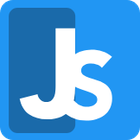
CSSDesk
CSSDesk is a free online sandbox environment designed for rapidly prototyping and testing HTML and CSS code snippets. It provides a split-pane interface for writing code and instantly previewing the results, making it an ideal tool for learning, experimenting, and debugging web development concepts directly within your browser.
About CSSDesk
- Learning New Concepts: Beginners can quickly grasp how different HTML elements and CSS properties affect the appearance of a webpage without the need for local setup.
- Prototyping Ideas: Experienced developers can rapidly test design ideas, layout structures, and styling variations before integrating them into larger projects.
- Debugging Snippets: It offers a clean, isolated environment to identify and resolve issues within specific code segments.
A key feature is the seamless live preview. As you type or modify your HTML or CSS, the preview pane updates instantly, allowing for a highly iterative workflow. The interface is straightforward, typically featuring draggable dividers to adjust the size of the code and preview sections according to your preference. While not a full-fledged IDE, CSSDesk includes helpful features like basic syntax highlighting to improve code readability. Another useful aspect is the ability to share your code snippets easily, often through a unique URL generated for each project. This makes collaboration or showcasing your work with others incredibly simple. It’s a lightweight yet powerful tool specifically tailored for the nuances of HTML and CSS development, offering a hassle-free way to explore the possibilities of web styling and structure.
Pros & Cons
Pros
- Instant live preview of HTML and CSS changes.
- Completely free to use with no registration required.
- Simple, clean, and intuitive user interface.
- Excellent for quickly testing and prototyping code snippets.
- Easy sharing of code and results via unique URLs.
Cons
- Limited feature set compared to full IDEs.
- No support for JavaScript or server-side languages.
- Lacks advanced debugging tools (beyond visual inspection).
- Minimal customization options for the editor interface.
- Relies on an internet connection to function.
What Makes CSSDesk Stand Out
Instant HTML/CSS Testing
Provides an immediate environment to test HTML and CSS code without any setup.
Simple and Focused
A clean interface solely focused on HTML and CSS previewing, avoiding unnecessary complexity.
Features & Capabilities
6 featuresLive Preview
Provides a real-time, instant preview of your web page in a browser as you edit HTML, CSS, or JavaScript code, eliminati...
View AppsAuto-refresh
Automatically updates the live preview whenever changes are made to the code.
View AppsSharable Code Snippets
Easily share your code and its preview with others via a unique URL.
View AppsExpert Review
CSSDesk Review
CSSDesk stands out as a highly accessible and user-friendly online tool for anyone working with HTML and CSS. Its primary function as a live sandbox is exceptionally well-executed, providing an immediate and visual connection between the code being written and its rendered output. This real-time feedback is not just a convenience; it's a fundamental advantage for both beginners and experienced developers.
The interface is minimalist and intuitive. Upon arrival, users are presented with a clear split-pane layout: one section for HTML code, another for CSS, and a third for the live preview. This arrangement is standard for code sandboxes, but CSSDesk's implementation is clean and uncluttered, allowing users to focus purely on the code and its result. The ability to easily resize these panes by dragging dividers is a simple but effective feature that enhances usability, allowing users to prioritize the area they are currently focused on.
One of the strongest aspects of CSSDesk is its speed. The auto-refresh feature, which updates the preview panel immediately as you type, creates a highly fluid coding experience. There's no need to manually save or refresh; every character typed or deleted directly influences the visual output. This instant gratification is particularly beneficial when experimenting with CSS properties, as you can rapidly iterate through different values and see their impact without breaking your flow.
While CSSDesk is not a full-fledged integrated development environment (IDE), it doesn't attempt to be. Its strength lies in its focused approach. It provides just enough functionality to be highly effective for its intended purpose. Basic syntax highlighting for HTML and CSS is present, which improves readability and helps in identifying code elements. However, users looking for features like advanced code completion, debugging tools beyond visual inspection, or support for preprocessors like Sass or Less will need to look elsewhere.
The sharing feature is another significant plus. Each project created on CSSDesk is typically assigned a unique URL, making it incredibly easy to share your code snippets and their results with colleagues, friends, or online communities. This is perfect for demonstrating a specific technique, asking for help with a coding issue, or showcasing a small design element.
Constraints do exist, however. As a web-based tool primarily focused on HTML and CSS, it doesn't support JavaScript execution, server-side languages, or complex build processes. This is a limitation by design, reinforcing its role as a dedicated HTML/CSS playground rather than a comprehensive development platform. For users working on projects that require interactivity or backend integration, CSSDesk serves best as a supplementary tool for isolated front-end testing.
Furthermore, while the interface is clean, it lacks some of the advanced customization options found in more robust IDEs or premium online code editors. The feature set is relatively static, focusing on the core sandbox experience.
In conclusion, CSSDesk is an excellent free resource for anyone who needs to quickly test and visualize HTML and CSS code. Its speed, simplicity, live preview, and sharing capabilities make it an invaluable tool for learning, prototyping, and debugging front-end snippets. It excels within its specific niche and delivers a reliable and efficient service for hands-on web development experimentation. While not suitable for complex, multi-file projects, it is arguably one of the best online sandboxes available for pure HML/CSS work.









